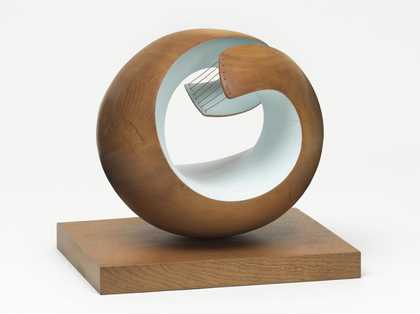
Dame Barbara Hepworth
Pelagos (1946)
Tate
Hepworth’s Pelagos 1946 reminds me of the swell, power and fascination of the sea, which has always been important to me, as I grew up on the coast in Brighton. My friends and I were drawn to the sea every day to play on the tar-splattered beach, escape family rows, clear our heads, or collect unusual stones. We night-fished, sunbathed and gathered on the beach after clubbing. I worked the deckchairs and kids’ fairground rides.
In the summer we pumped up lorry tyre inner tubes and manoeuvred unsafely out into the swell. The water was always freezing, and a bit polluted, but we didn’t care, even though we accidentally swallowed plenty of it. However, the winter was my favourite season with its churning, violent sea and empty beaches.
All the action in this sculpture seems to be hidden and happening on the inside, as though a wave is on the cusp of breaking. The interior’s luscious shade of cool light blue is set off by the beauty of the nut-like exterior form in elm wood. The sculpture doesn’t reveal itself all at once; you can spend time contemplating its formal and associative relationships.
The strings make me think of Brighton’s piers - structures I loved. I was fascinated by them being partly submerged, rusty and barnacle encrusted, but enjoyed also the sense of relief they offered through looking out to the sea’s empty horizon, as if leaving England. I’d glance back to see the city at a good distance stretched out behind its motley façade.
Simon Wallis is the first director of The Hepworth Wakefield.
